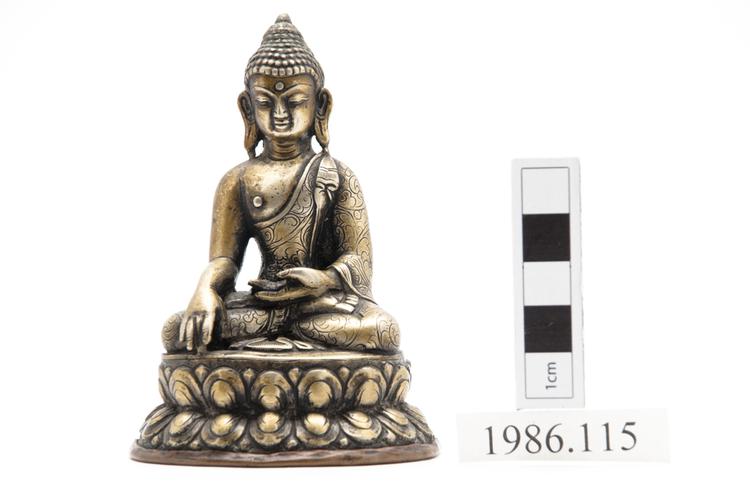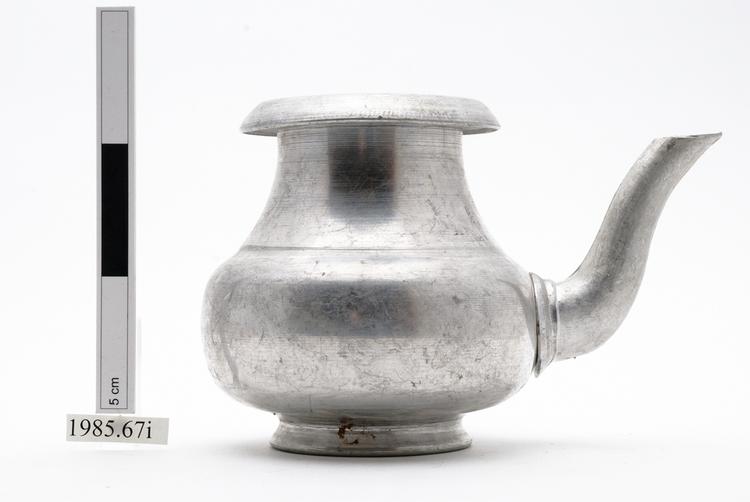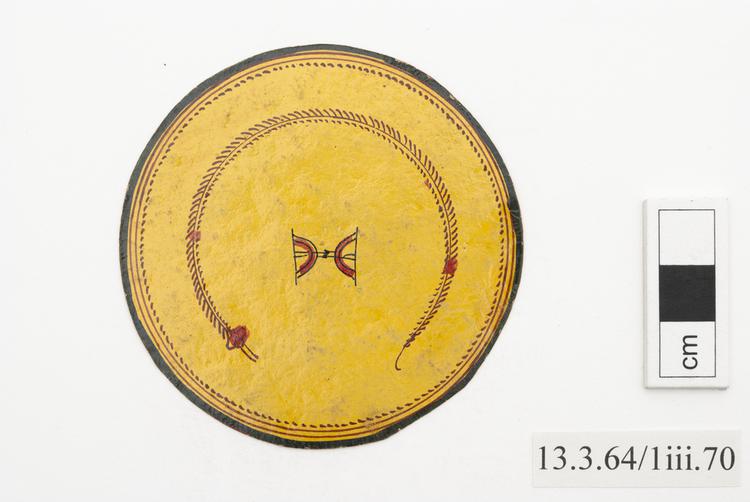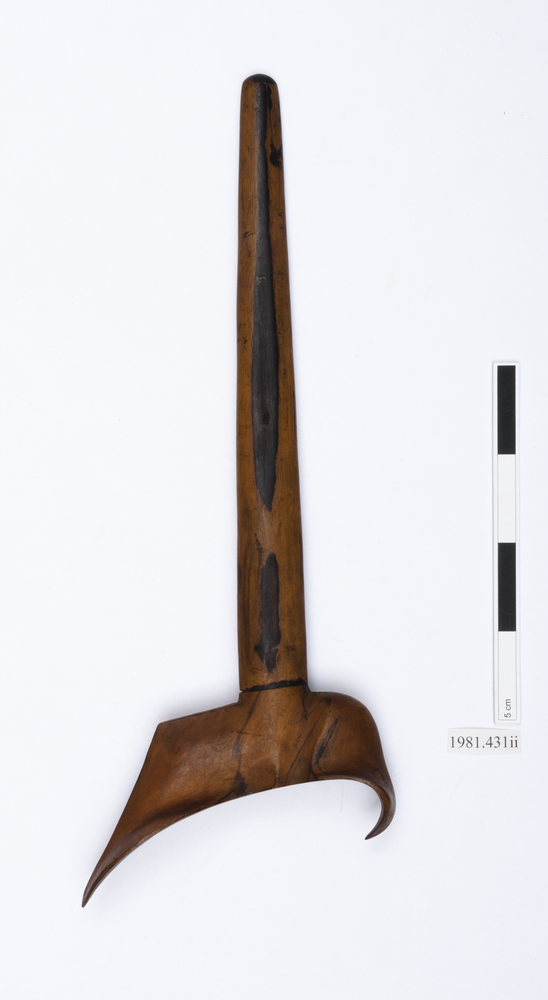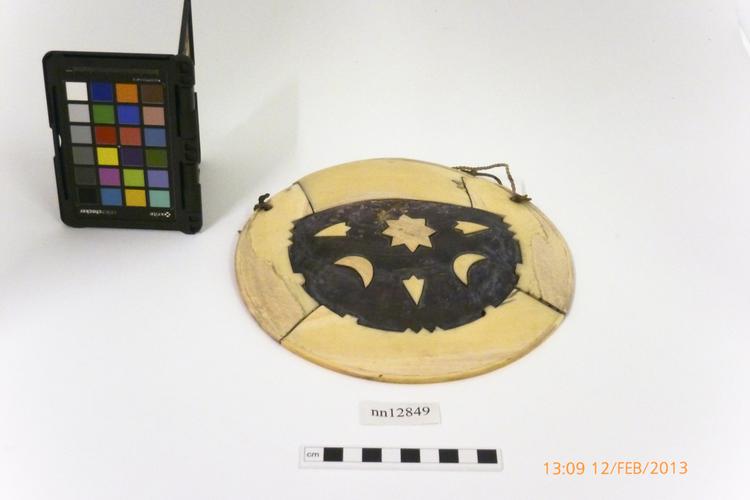
Chief's breast ornament of pearlshell and sperm whale ivory, formed into a convex disk. The whale tooth has been sawn up using an imported steel tool and jointed into the pearlshell centrepiece with hidden-fixing boatbuilding techniques. Inset in the shell are smaller pieces of ivory depicting stars, crescents, and gaming dart-heads, which are all symbols of chieflyness in Fiji and Tonga.
Chiefly Breast Ornament, Civavonovono, Fiji, Western Polynesia. These composite breast ornaments of pearl shell and Sperm Whale (Physeter catodon) ivory are unique to Western Polynesia, although they share a number of features with similar neck pendants in both eastern Melanesia and Central Polynesia. Termed civa in Fijian, the use of black-lipped pearl shells (Pinctada margaritifera) as breast adornments was widespread in the Pacific. Where the Western Polynesians excelled was in their absolute mastery of ivory working. Here, we can see that the composite ornament has been created by sawing a whale’s tooth into thin slices, and then jointing these slices together to form a ring that encircles the shell’s natural shape. The width of the uppermost ivory plate in particular indicates that this breastplate was exceptionally valuable, as its construction demanded the sacrifice of two large teeth. Given that, for the Fijians, whale teeth (tabua) were the most precious of ceremonial valuables, and a particularly fine tooth could purchase an entire ship outright, the value of a civavonovono like this starts to make sense to the outsider. The sun, moon and dart-head pieces of ivory inlay are symbols of chiefly splendour and the aristocratic lifestyle that were commonly found on breastplates, headrests and clubs throughout Western Polynesia. The intricate manufacture of the civavonovono was achieved with steel saws and drills from the early 19th century onwards, although the techniques involved are entirely traditional. The plates of shell and ivory are joined with invisible fixings derived from the refined Tongan art of boatbuilding; pieces that butt up against each other are joined by drilling holes through diagonally from the back to meet on the edge, and then the plates are tied together with coconut fibre cordage. All of the seams were then completely sealed with makadre tree resin to set them together. The similarity of the civavonovono’s manufacture to Tongan and Samoan boatbuilding techniques is not accidental: Many of the professional ivory workers in Fiji during the 19th century were Tongans of traditionally tufunga fono lei ivory-working lineages, and much of the whale ivory circulating in Fiji had its origin in Tongan waters. At the Horniman, we believe this particular breastplate is of a stand-out quality, symmetry and style that has been attributed by experts to an un-named master who was working for the matanitu (chiefdom) of Bau island in central Fiji during the 1840s and 1850s, and it is therefore likely to be among the earliest examples of civavonovono known. It was formerly in the private collection of Sir Everard Im Thurn, and purchased by the Horniman Museum in 1920.



